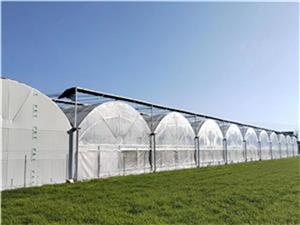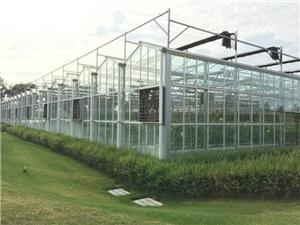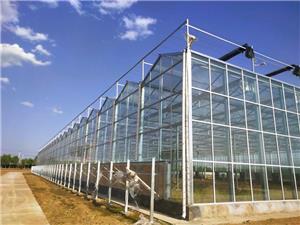Innovative glass greenhouses: Pioneering tools for scientific research
In recent years, glass greenhouses have become a crucial structure in the field of research. These specialized facilities are designed to create the optimal growing conditions while allowing researchers to manipulate environmental factors and observe plant behavior in a controlled environment. Glass has numerous advantages in greenhouse construction, making it an ideal choice.
In recent years, glass greenhouses have become a crucial facility in the field of scientific research. These specialized facilities are designed to create the optimal growing conditions while allowing researchers to manipulate environmental factors and observe the behavior of plants in a controlled environment. Glass has numerous advantages in greenhouse construction, making it an ideal choice for scientific applications.
One of the main advantages of glass greenhouses is their excellent light transmission. Glass can absorb sunlight to the maximum extent, which is crucial for photosynthesis and plant growth. This characteristic is particularly important for researchers studying plant biology, genetics, and physiology. Using glass greenhouses, scientists can effectively simulate natural growth conditions and observe how different variables affect plant development.
Another notable feature of glass greenhouses is their durability and lifespan. Unlike plastic alternatives (which degrade over time due to ultraviolet radiation), glass can maintain its transparency and structural integrity for many years. This lifespan is particularly important in research, as long-term studies often yield the most valuable results. Investing in glass greenhouses ensures that researchers have a reliable experimental environment and minimizes the need for frequent greenhouse replacements.
In addition to physical characteristics, glass greenhouses also have flexible designs. They can be customized according to specific research needs, such as different sizes, shapes, and ventilation systems. This adaptability enables scientists to create customized environments conducive to their research, whether they focus on crop production, climate change, or pest and disease management. Moreover, the temperature, humidity, and air flow control functions within glass greenhouses provide researchers with the means to replicate various climate conditions, thereby facilitating comprehensive experiments.
Furthermore, the aesthetic appeal of glass greenhouses cannot be ignored. Their transparent nature allows people to have a clear view of the internal plants, making them visually striking structures. This is not only crucial for research but also educational. Schools, universities, and public institutions can use glass greenhouses as teaching tools to help students and the community understand sustainable practices and the importance of plant research.
In conclusion, glass greenhouses are invaluable in the field of scientific research. With their excellent light transmission, durability, customizable designs, and aesthetic appeal, these structures create ideal environments for studying plant growth and behavior. As scientists continue to seek innovative solutions to global challenges, the role of glass greenhouses in research will undoubtedly expand, paving the way for significant advancements in agriculture, ecology, and other fields.
In recent years, glass greenhouses have become a crucial structure in the field of research. These specialized facilities are designed to create the optimal growing conditions while allowing researchers to manipulate environmental factors and observe plant behavior in a controlled environment. Glass has numerous advantages in greenhouse construction, making it an ideal choice.
In recent years, glass greenhouses have become a crucial facility in the field of scientific research. These specialized facilities are designed to create the optimal growing conditions while allowing researchers to manipulate environmental factors and observe the behavior of plants in a controlled environment. Glass has numerous advantages in greenhouse construction, making it an ideal choice for scientific applications.
One of the main advantages of glass greenhouses is their excellent light transmission. Glass can absorb sunlight to the maximum extent, which is crucial for photosynthesis and plant growth. This characteristic is particularly important for researchers studying plant biology, genetics, and physiology. Using glass greenhouses, scientists can effectively simulate natural growth conditions and observe how different variables affect plant development.
Another notable feature of glass greenhouses is their durability and lifespan. Unlike plastic alternatives (which degrade over time due to ultraviolet radiation), glass can maintain its transparency and structural integrity for many years. This lifespan is particularly important in research, as long-term studies often yield the most valuable results. Investing in glass greenhouses ensures that researchers have a reliable experimental environment and minimizes the need for frequent greenhouse replacements.
In addition to physical characteristics, glass greenhouses also have flexible designs. They can be customized according to specific research needs, such as different sizes, shapes, and ventilation systems. This adaptability enables scientists to create customized environments conducive to their research, whether they focus on crop production, climate change, or pest and disease management. Moreover, the temperature, humidity, and air flow control functions within glass greenhouses provide researchers with the means to replicate various climate conditions, thereby facilitating comprehensive experiments.
Furthermore, the aesthetic appeal of glass greenhouses cannot be ignored. Their transparent nature allows people to have a clear view of the internal plants, making them visually striking structures. This is not only crucial for research but also educational. Schools, universities, and public institutions can use glass greenhouses as teaching tools to help students and the community understand sustainable practices and the importance of plant research.
In conclusion, glass greenhouses are invaluable in the field of scientific research. With their excellent light transmission, durability, customizable designs, and aesthetic appeal, these structures create ideal environments for studying plant growth and behavior. As scientists continue to seek innovative solutions to global challenges, the role of glass greenhouses in research will undoubtedly expand, paving the way for significant advancements in agriculture, ecology, and other fields.




